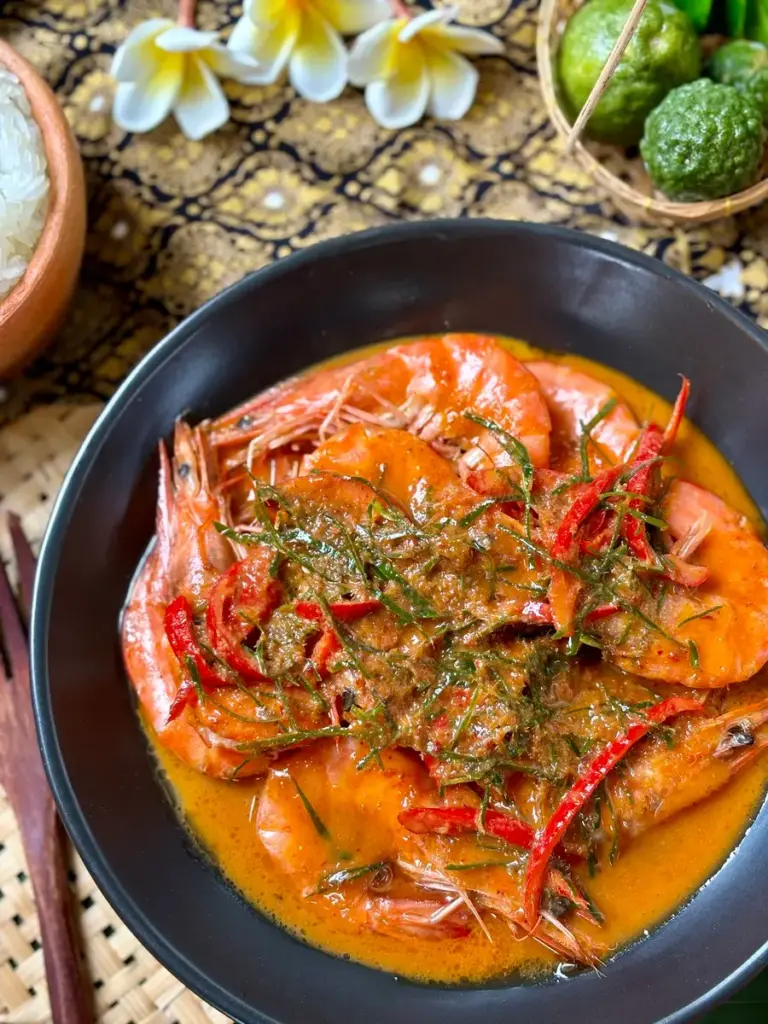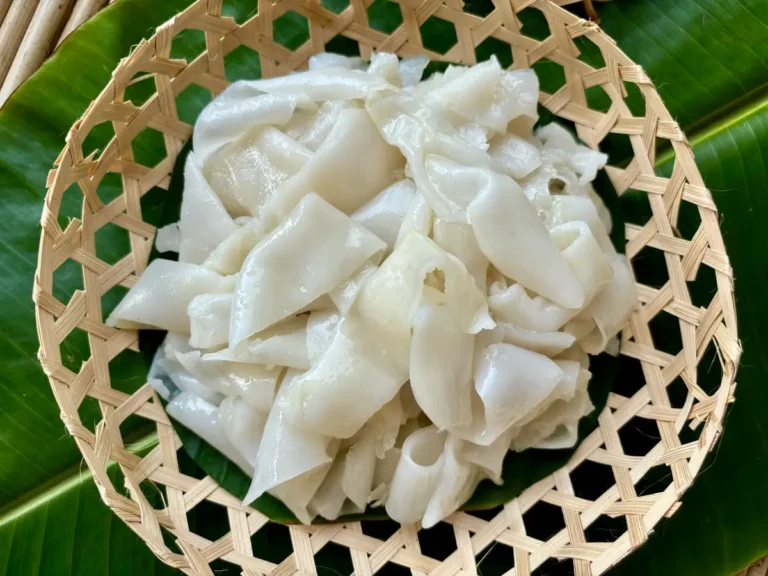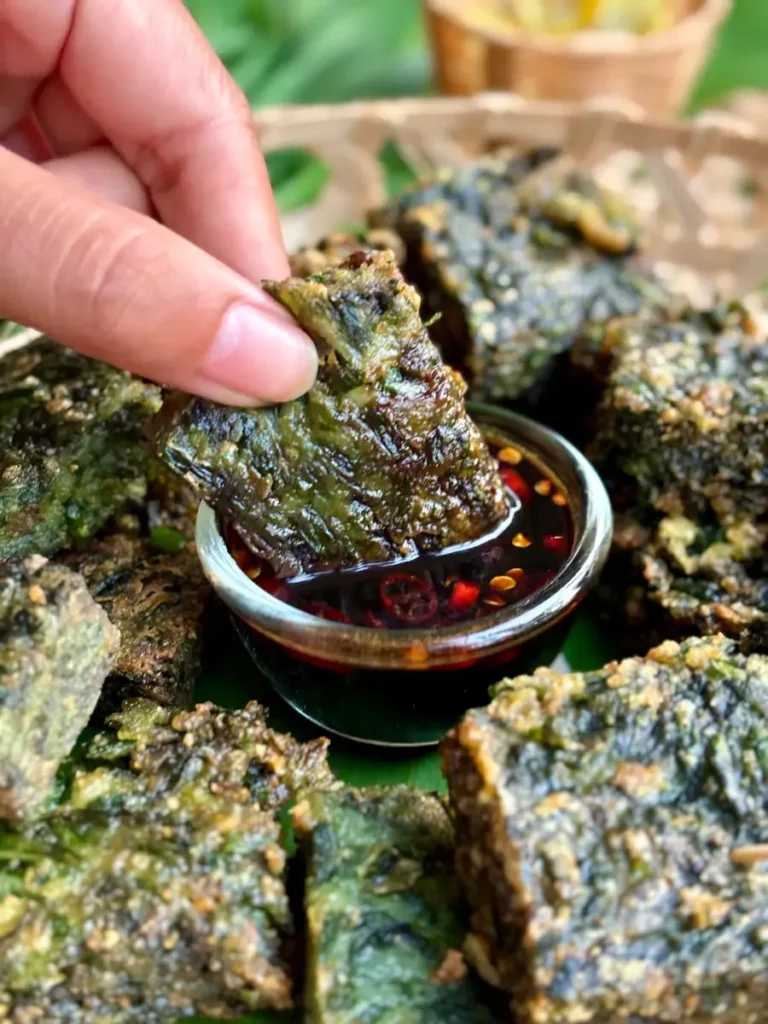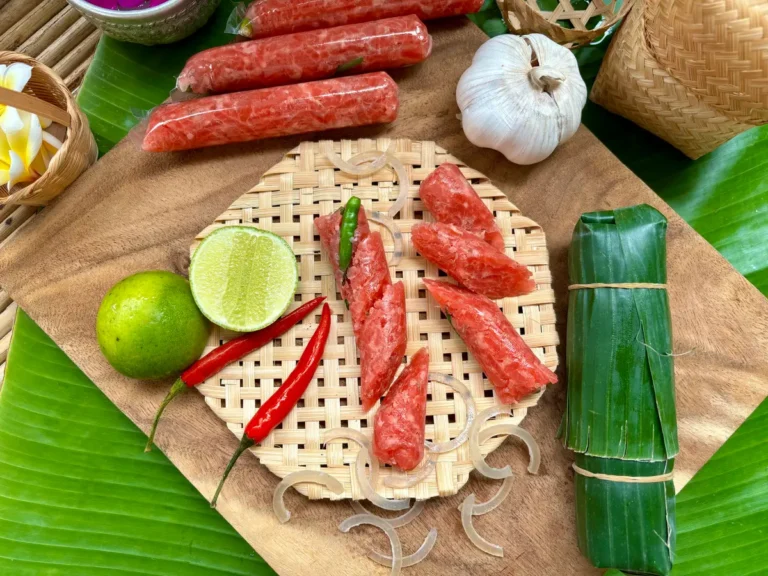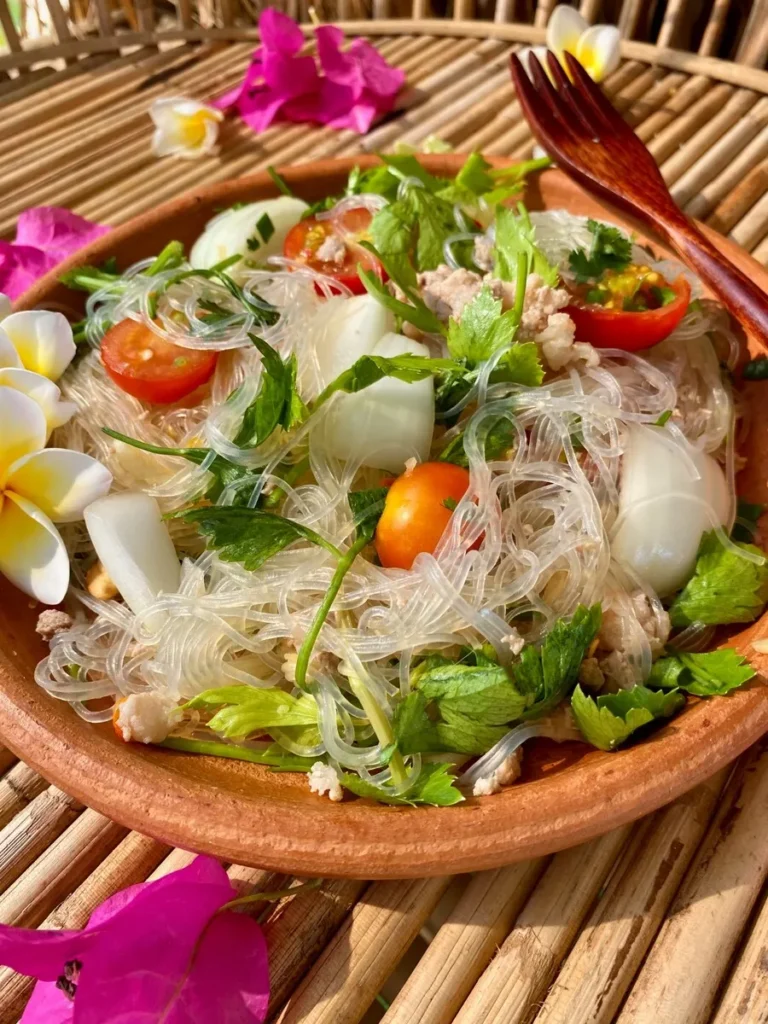Tamarind Sauce Recipe
This tamarind sauce recipe makes it unbelievably easy to whip up homemade tamarind concentrate from scratch. From there, we’ll transform the zesty extract into an irresistibly sweet and tangy dip. Drizzle it over your favorite dishes to add that perfect balance of flavor.
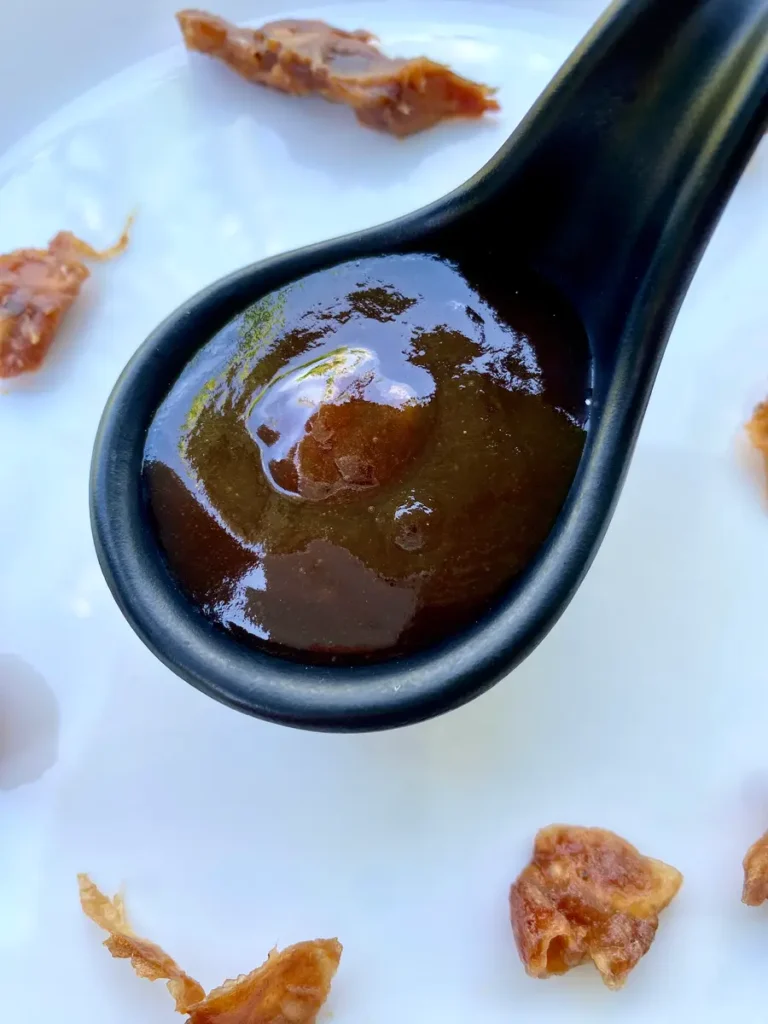
What is tamarind sauce
Tamarind sauce, a versatile sweet and sour condiment, is made from the pulp of tamarind fruit. Widely used in Middle Eastern and Asian cuisines, it enhances marinades, dips, glazes, and more.
What is tamarind
Tamarind is a tropical, pod-like fruit known for its tart flavor. It comes from the Tamarindus indica tree and is widely used in cooking and medicine. The fruit’s pulp is the main ingredient in many sauces, drinks, sweets, and more, used for its sour and slightly sweet taste.
Inside each tamarind pod is a brown, sticky pulp that’s a delicious mix of sweet and sour. The pulp is what we use in dishes and sauces.
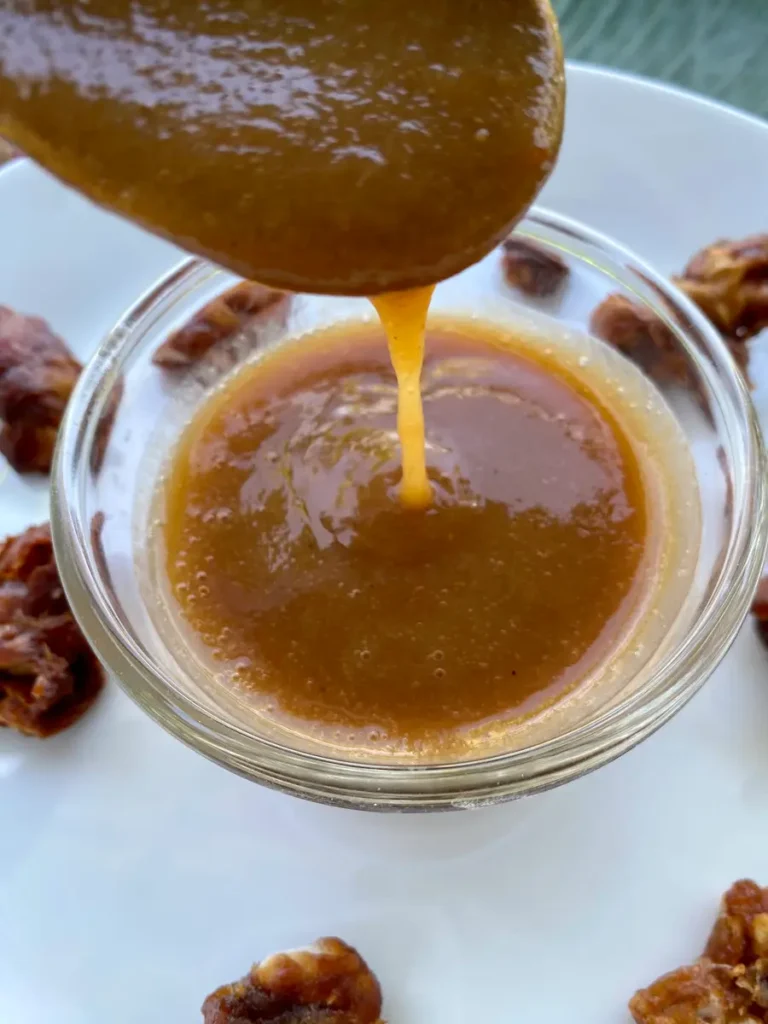
In Thailand, a spicy tamarind dipping sauce is enjoyed with everything from crispy spring rolls to juicy fish cakes, and let’s not forget those tasty look chin street food meatballs.
This easy dipping sauce recipe is simple yet delicious. We focus on balancing the sweet with the sour to create an irresistibly delicious sauce, and there’s no spice in it, so it’s perfect for the kids too!
What is tamarind chutney
Tamarind chutney is a specific type of Indian tamarind sauce that falls under the category of chutneys in Indian cuisine. It’s more of a jelly-like sauce, often used as a condiment, where tamarind concentrate is the base. To this sauce, recipes often add a complex mix of flavors and Indian spices.
It starts with making tamarind concentrate, the liquid that’s extracted from the pulp.
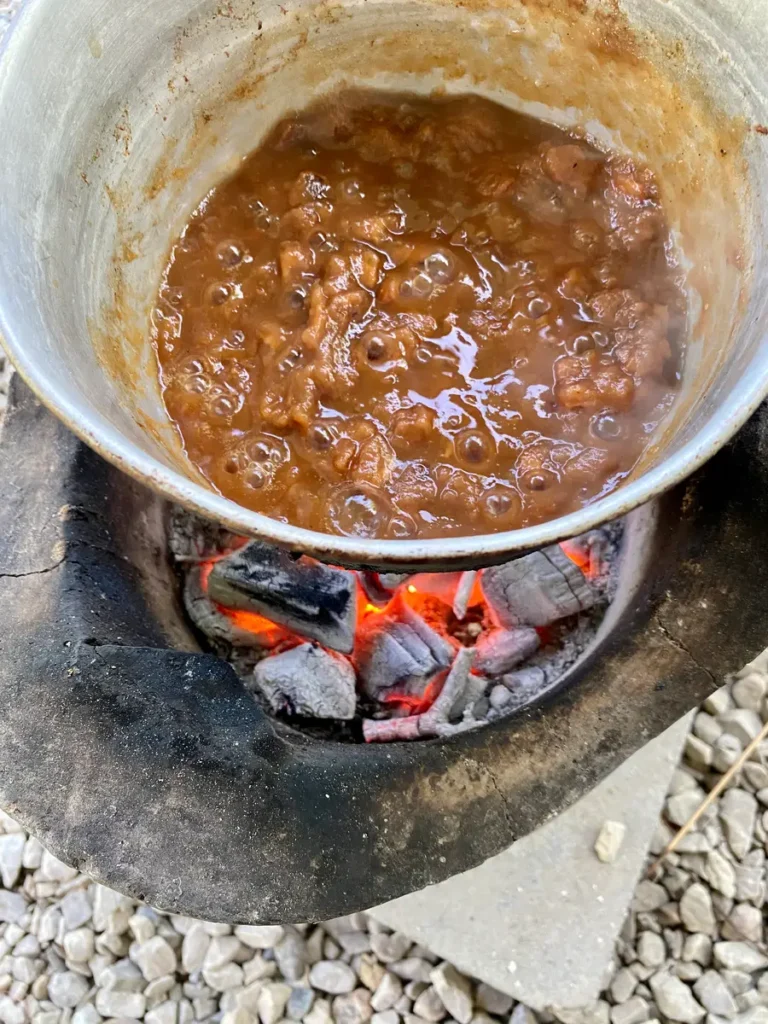
To this, a touch of sweetness is added with sugar, jaggery, or honey. Additionally, Indian spices and other ingredients like cumin, ginger powder, cayenne pepper, coriander, anise seed, or black salt can also be added for more flavor.
You’ll find tamarind chutney served with Indian food like samosas, pakoras, chaats, vada pav, aloo tikki, and others. A fresh mint chutney is often served alongside the sweet and sour tamarind chutney to balance it with a bit of freshness and spice.
All in all, tamarind chutney is a versatile condiment that can be used for many things:
- Dipping sauce for vegetables
- As a marinade for meat
- Add it to your stir-fries
- Spread out on toast
- Drizzle it over rice
- Salad dressing
What is tamarind concentrate
Tamarind concentrate is a thick extract made from the pulp of tamarind fruit. Known for its sweet and sour flavor, it’s used as a flavoring agent in many cuisines, particularly in sauces, marinades, and Asian food.
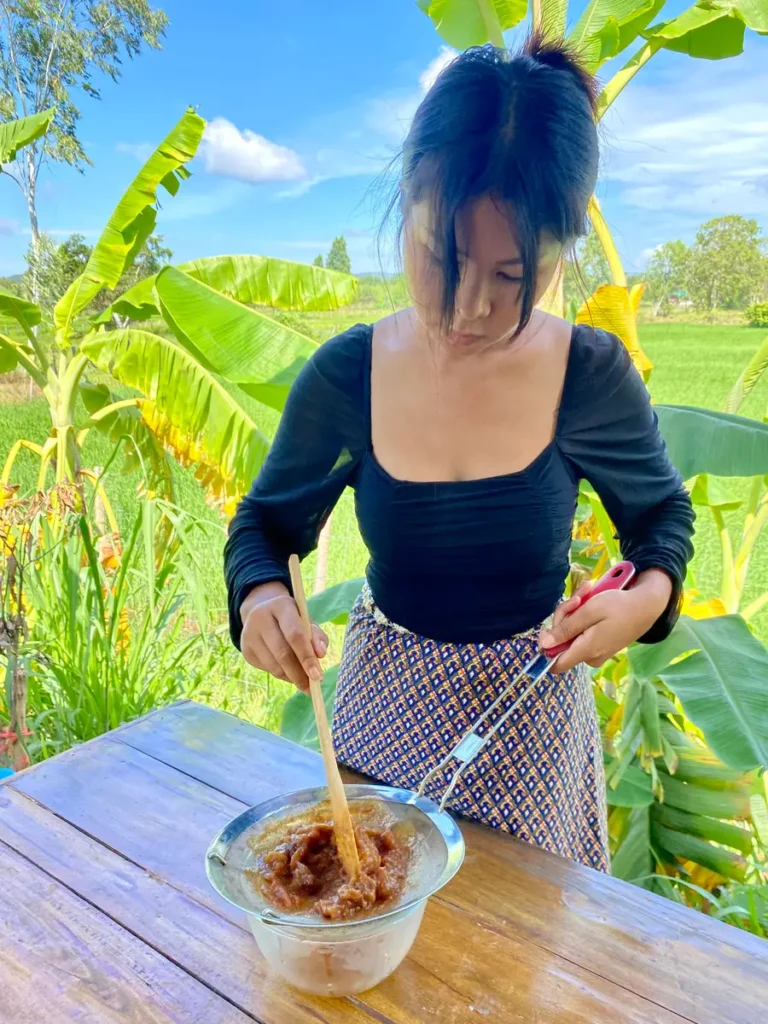
We’ll extract the concentrate by simply mixing tamarind pulp with water, and then straining the liquid. The resulting tamarind concentrate is a tangy and slightly sweet concentrate that can be added to curries, stirred into sauces, used to flavor up soups, and more.
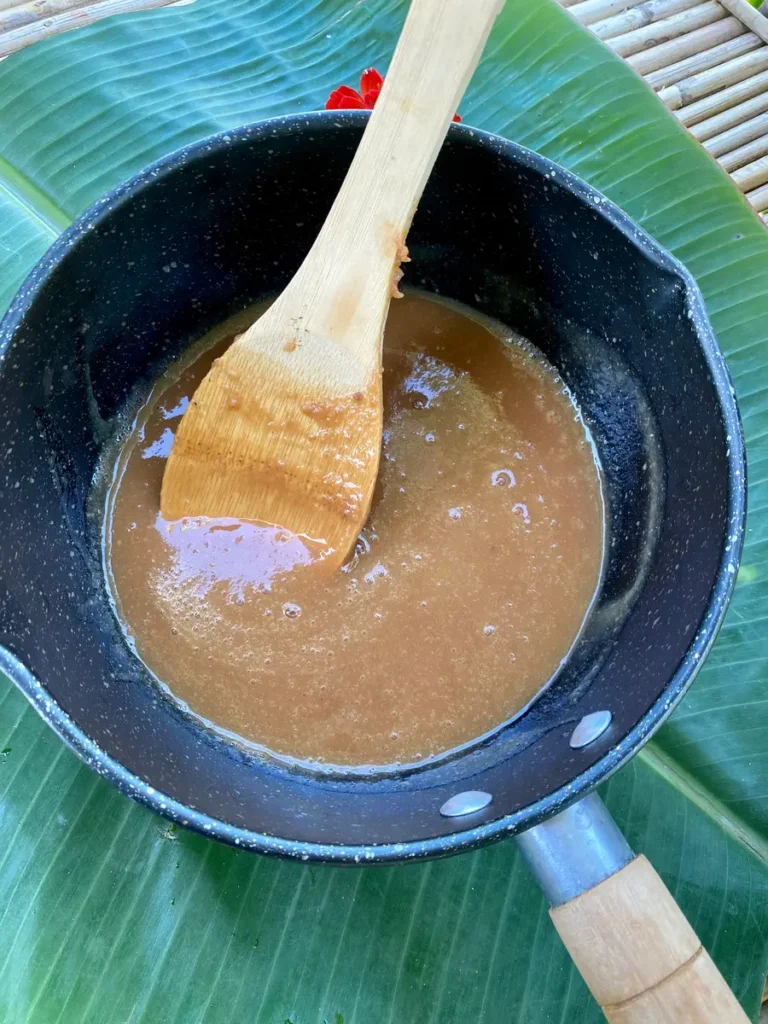
Tamarind pulp can be found at Thai supermarkets or Asian and Indian grocery stores, markets, or you can order it online.
I suggest purchasing seedless tamarind pulp.
Recipes with tamarind concentrate
Tamarind extract is often used as an ingredient in Thai food. After making the concentrate, you can use it in one of my other Thai recipes:
Why make tamarind dipping sauce
- You’ll learn how to extract tamarind concentrate.
- Customize the flavors: Adapt this sweet and sour sauce to your taste. Whether you prefer it sweeter, tangier, or with a kick of Thai chili flakes, it’s all up to you.
- Perfect for meal prep: Cook a large batch because it will last you a while. Freshly made, it keeps for up to 2 weeks, and you can even freeze some for later.
- Homemade is best: A core essence of Thai cuisine is cooking from scratch, homemade tamarind sauce is better than store-bought!
- Preservative-Free: Enjoy a dip free from preservatives and additives, crafted with only natural ingredients for a delicious, wholesome sauce.
- Perfect for all: Tamarind sauce is gluten-free, vegetarian, and vegan, it’s the perfect addition to everyone’s meal.
Ingredients
Ingredients can be sourced at Asian grocery stores and Asian markets.
The exact measurements are in the recipe card at the end of this post.
Extract the tamarind concentrate
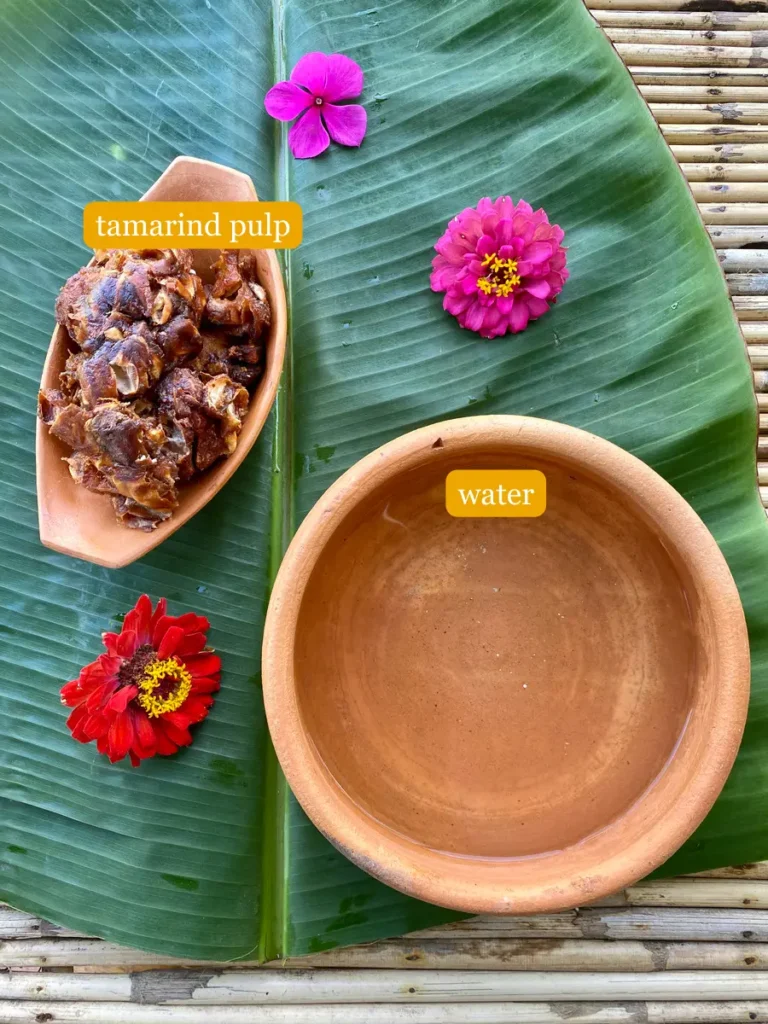
- Tamarind pulp – Tamarind pulp is the sticky fruit of the tamarind pod. When cooked with water, you can drain it to extract tamarind concentrate.
- Water
Tamarind sauce
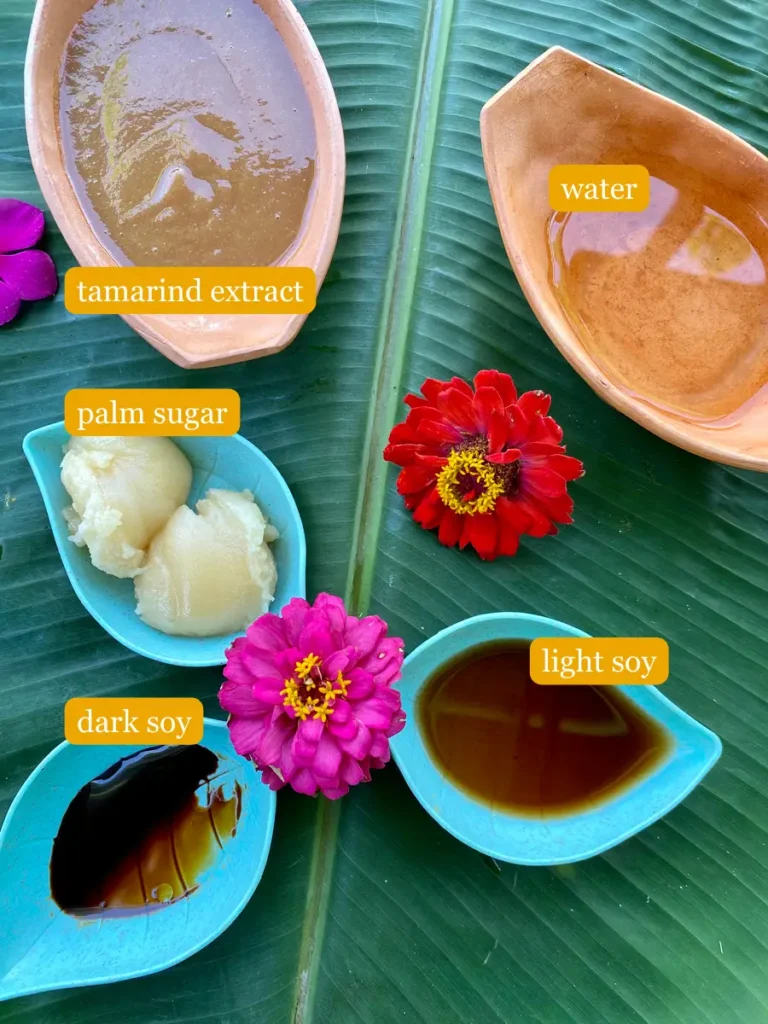
- Tamarind extract
- Light soy sauce – Light soy is a key ingredient of Asian cuisine, often used for adding saltiness and umami to many Asian dishes.
- Dark soy sauce – Dark soy sauce adds a rich color, a subtle sweetness, and depth to the sauce.
- Palm sugar – This sweetener is a key ingredient in Thai cuisine, with a subtle caramel-like flavor.
- Water
Cooking instructions
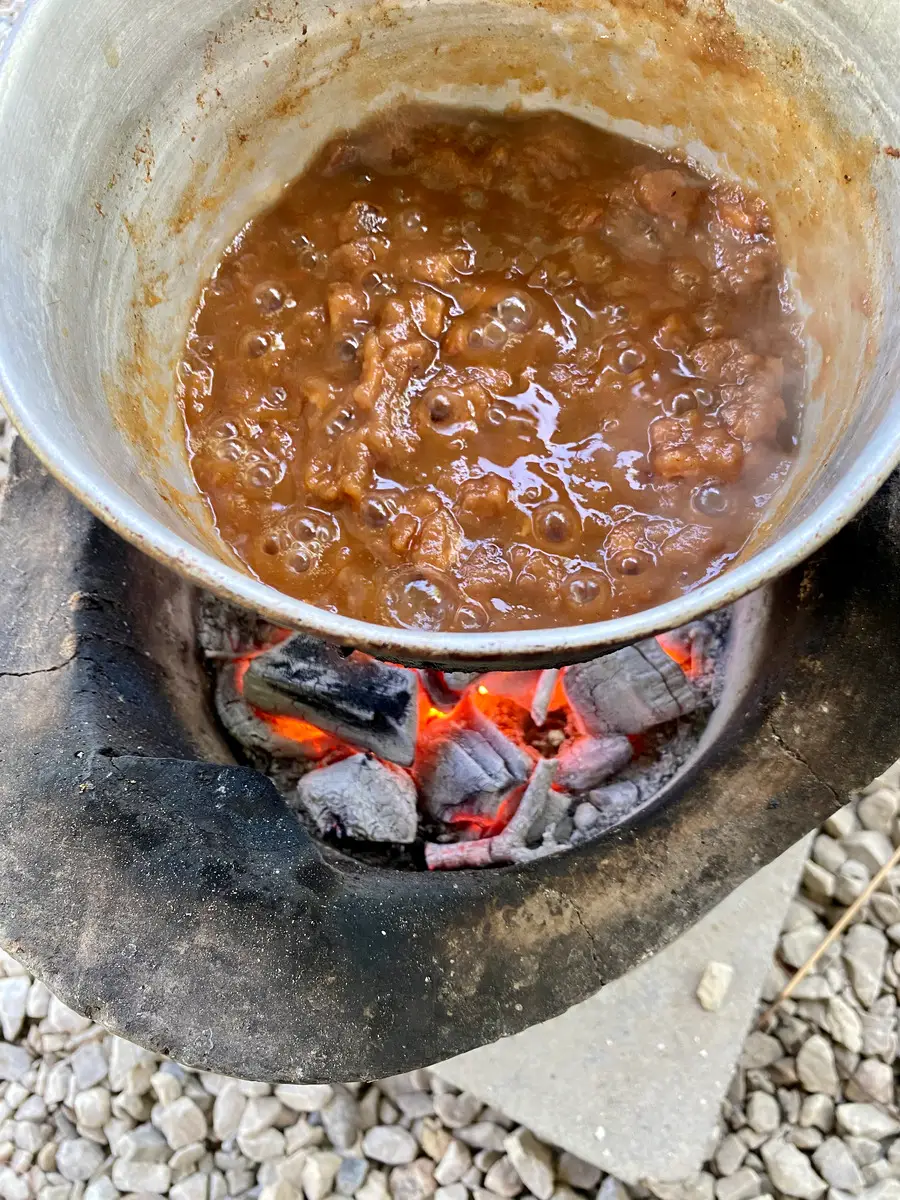
1. Cooking tamarind concentrate: In a pot or non-stick pan over medium heat, combine water and tamarind pulp. Stir while simmering until the pulp dissolves, thickens, and the water reduces.
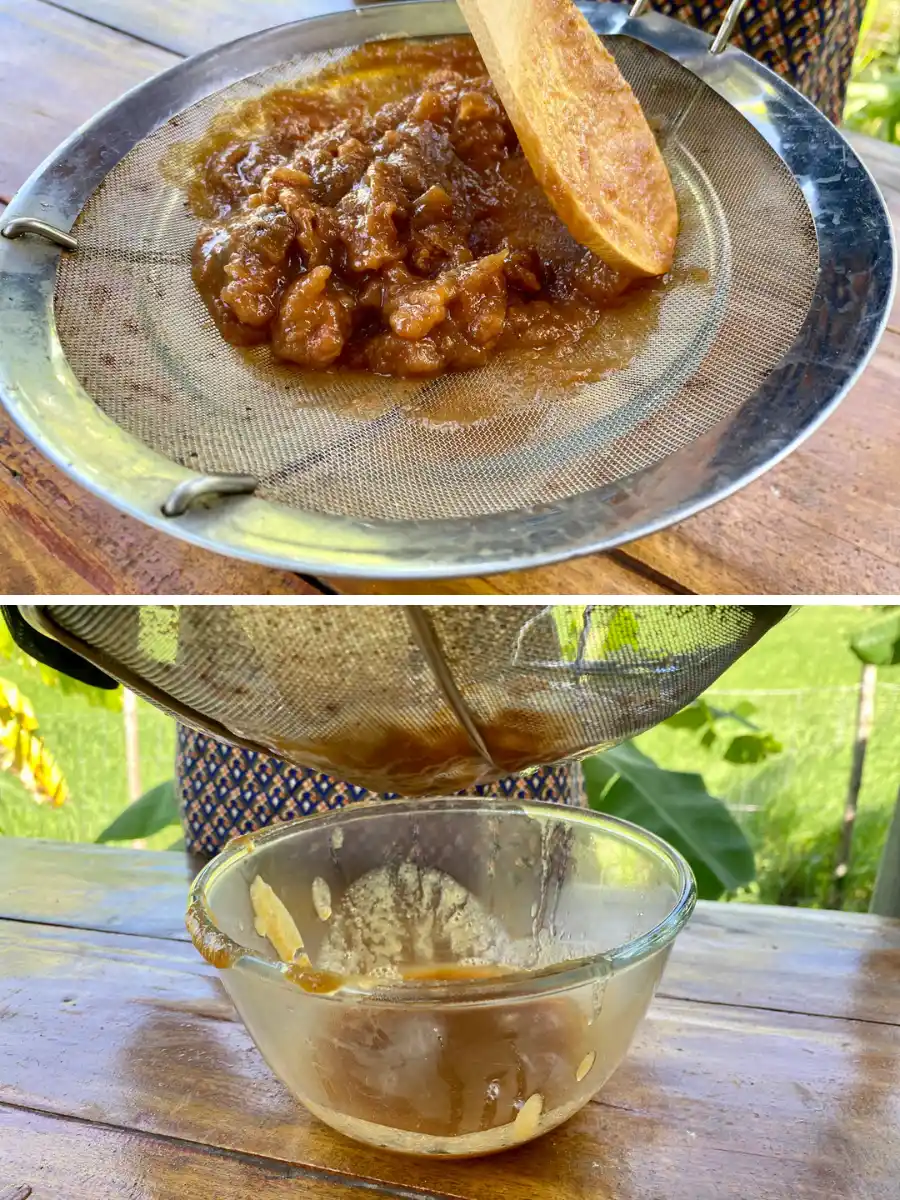
2. Extracting the liquid: Strain the cooked tamarind concentrate through a sieve into a bowl, pressing to extract maximum liquid. Add a splash of water and reheat briefly if more liquid is needed.
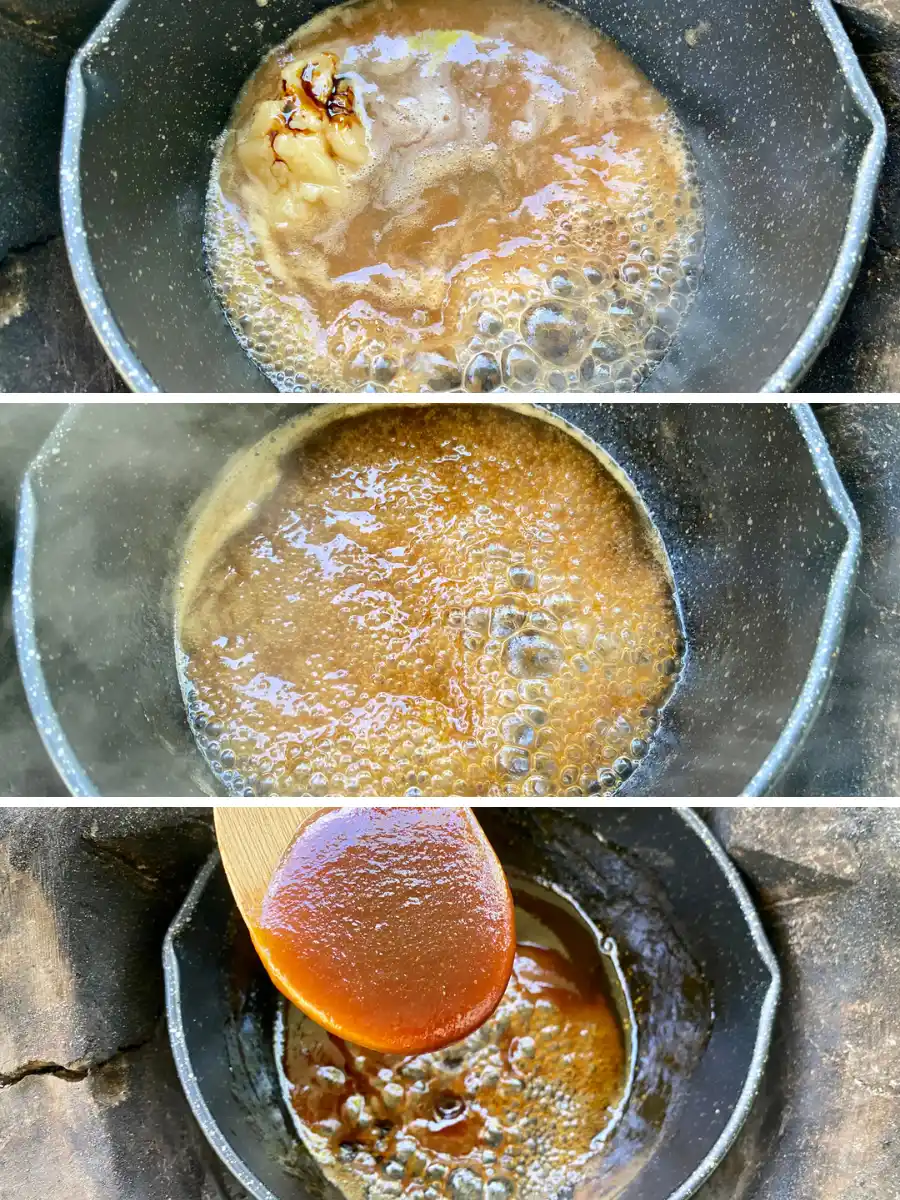
3. Preparing the sauce: Heat a pot over medium. Mix tamarind liquid, light and dark soy sauce, palm sugar, and water. Cook until the sauce thickens, turns dark brown, and gets a glossy glaze. Serve immediately.
How to use tamarind sauce
Transfer the sweet and tangy tamarind sauce to a small bowl or sauce cup. It pairs great with lots of dishes:
- Drizzle it over salads or fresh vegetables
- Moo yang (grilled pork), chicken, or shrimp
- Kanom jeeb (Thai dumplings)
- Thai shrimp rolls
- Fried food
- Calamari
How to store
Store the leftover sauce in an airtight container, like a mason jar, in the fridge. This Thai tamarind sauce can last up to a couple of weeks. Use a fresh spoon for serving.
Freezing instructions: For longer storage, you can freeze the sauce in a freezer-safe container and thaw in the fridge when needed.
Fun facts
- During tamarind season, trees are laden with countless pods. This might sound strange to some, but I love to pluck the pods and simply eat the fruit directly.
- The wood of tamarind trees is known for burning quickly. In Thailand, especially in Isan, tamarind wood is a popular choice for firewood to start cooking fires.
Frequently asked questions
What does tamarind taste like?
Tamarind has a distinct tangy flavor, combining sour and sweet notes. Its sourness is subtle, not as sharp as lemons. Think of it as a gentle, lingering tartness. There’s also a hint of fruitiness similar to dates.
Is tamarind sauce spicy?
No, this recipe for tamarind sauce is not spicy. Instead, it is subtly sweet, tangy, and sour. For a spicy alternative, see this spicy Thai tamarind dipping sauce.
Is tamarind good for you?
Yes, tamarind is a fruit with several health benefits. It’s rich in essential nutrients, it’s anti-inflammatory, helps with digestive health, has antioxidant properties, and the list goes on. It’s for good reason that tamarind has been a traditional medicine for ages. As with most food, individual responses to tamarind can vary.
More Thai sauces you’ll love
- Fruit dipping sauce – Made with dried shrimp, traditionally used as a dip for sour green mangoes.
- Green chili sauce – Easy to make with green chilies, fish sauce, fresh lime juice, and fresh herbs.
- Nam prik noom – A delicious vegan dip with roasted chilies.
- Thai sweet chili sauce – Nam chim kai is easy and versatile, you can pair it with just about anything.
Loved reading this tamarind sauce recipe? Please make my day by dropping a star rating and/or a comment below!
Tamarind Sauce Recipe

Ingredients
TO EXTRACT TO CONCENTRATE
- 3.5 ounces tamarind pulp
- 17 fluid ounces water
TO MAKE THE SAUCE
- 1/2 cup tamarind concentrate
- 2 tablespoons palm sugar
- 1 tablespoon light soy sauce
- 1/2 teaspoon dark soy sauce
- 3 tablespoons water
Instructions
COOKING TAMARIND CONCENTRATE
- In a pot or non-stick pan over medium heat, combine water and tamarind pulp. Stir while simmering until the pulp dissolves, thickens, and the water reduces.
EXTRACTING THE LIQUID
- Strain the cooked tamarind concentrate through a sieve into a bowl, pressing to extract maximum liquid. Add a splash of water and reheat briefly if more liquid is needed.
PREPARING THE SAUCE
- Heat a pot over medium. Mix tamarind liquid, light and dark soy sauce, palm sugar, and water. Cook until the sauce thickens, turns dark brown, and gets a glossy glaze. Serve immediately.
Notes
- Use the nutrition card in this recipe as a guideline.
- Tamarind sauce makes a great dip for a wide array of food.
- The tamarind extract can be used in my recipes that call for tamarind. You have to adjust the quantity, since tamarind extract is highly concentrated.
